The Rise and Fall of the Absolute Monarchy:
Grand Siècle and Enlightenment
(second half of the 17th -- end of the 18th centuries)
International recognition of French creativity in the arts, literature, and science formed an integral part of Louis XIV's strategy to dominate European culture. Recognizing that political power lay in cultural superiority, and assisted by his minister, Colbert (Controller General of the Finances, 1662-1683), Louis XIV (1643-1715) initiated an all-encompassing cultural program designed to glorify the monarchy in his person. Fueled by state patronage, this cultural initiative channeled the creative forces of French elite culture into academies, luxury goods, industries, technology, engineering projects, and imperial expansion.
State control of culture reached unprecedented heights under Louis XIV, the Sun King (le Roi Soleil). Newly created academies in the arts and sciences generated heroic representations of the king that reinforced the royal religion. Increasing censorship targeted "scandalous" texts (for example, pornography) and political writings incompatible with absolute monarchy. Systematic purchases of treasures from ancient and modern cultures the world over enhanced the regime's prestige. The need to reign supreme in cultural matters also spawned French Classicism, the crowning cultural achievement of France's golden age under Louis XIV.
As the Sun King's reign passed into its twilight years, some judged the social stability and routine he had created as oppressive to the individual spirit. A "counter-cultural" revolution under his successors, Louis XV (1715-1774) and Louis XVI (1774-1793), unleashed Enlightenment ideas and values which tore away at the theatrical and courtly foundations that Richelieu and Louis XIV had given the state. The cultural vitality of the realm shifted decisively from the royal court at Versailles to Paris. The increased role of the press, of reports of scientific and commercial activities, of exploration and discoveries, as well as the weekly meetings of academies and salons energized literary, artistic, and artisan circles.
The writer -- whether a novelist, a scientist, or a philosopher describing a new and better society -- became the guiding light of a culture that was enthusiastic about itself, eager for change, and increasingly beyond the control of royal censorship. In personal, cultural, and political identity, the writer evolved from a royal servant to an independent moral authority. The increasingly emancipated condition and subversive potential of authors reached their climax during the French Revolution (1789-1799) when the printed word played a mighty role in bringing down the Ancien Régime.
From Empire to Democracy:
The Independence of Culture
(1799 to present)
France and the United States are rightly considered the birth places of modern democracy. But while Americans have enjoyed the political and institutional stability of the "one and indivisible Republic" for over 200 years, the French since 1789 have experienced a succession of short-lived regimes: a Directoire, a consulate, two empires, two monarchies, and five republics, as well as the Vichy regime during World War II. In France, as one President of the Fifth Republic has noted, political crises tend to lead to institutional crises which threaten the regime itself. In such moments, the French have thrice heeded the call of charismatic and prestigious leaders (Napoleon I, Napoleon III, and Marshall Pétain) whose temperaments and politics paid short shrift to democracy. But twice they have turned to General Charles de Gaulle, who led the French Resistance against the Nazis and, in 1958, founded France's current regime, the Fifth Republic. To date, it has proven a robust, prosperous and stable democracy.
The United States has not faced the threat of military invasion since the early nineteenth century. France, on the other hand, was overrun by foreign armies in 1814-1815 and later fought three major wars on her soil over seventy-five years (the Franco-Prussian War of 1870 and the two World Wars). Nor have the French been spared civil strife, including revolutions (1830, 1848), civil wars (1871, 1940-45), bitter wars of decolonization in Indochina and Algeria after World War II, and paralyzing nationwide strikes in 1968.
Such cataclysms have inflicted incalculable human and material losses. But they have also provided an inviting canvas of events and ideas for the creative brush strokes of poets, playwrights, novelists, painters, caricaturists, and statesmen -- possible proof that the great artists of the modern era are motivated more by upheaval and injustice than by tranquil prosperity. The result: a remarkably rich and diverse culture, inspired by Enlightenment values and independent as never before from those who hold the reins of power.
Equally impressive has been the ultimate triumph of the revolutionary ideals of 1789: Liberty, Equality, Fraternity. That victory owes much to the French men and women who have defended freedom and democracy against domestic and foreign foes alike, often at the peril of their lives. Many of the items in this final section of Creating French Culture bear witness to their courage in the face of censorship and worse, and to their unwavering commitment to principles which Americans, too, have always cherished.
The Impressionists' Paris:
Walking Tours of the Painters' Studios, Homes, and the Sites They Painted
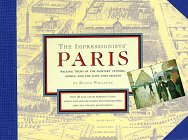 One could hardly visit Paris without viewing the work of the French impressionist painters, whose innovative take on the City of Light left an indelible mark on the art world. This charming little hardcover, perfect for the pocket or backpack, allows travelers to venture beyond the museum walls and trace the footsteps of these great artists, including Claude Monet, Edgar Degas, and Edouard Manet, just to name a few. Three city walking tours--surprisingly manageable considering the city's size--cover not only the sites depicted in many of their paintings, but also "the studios in which they worked, the buildings where they lived, and--this being Paris--the cafes in which they gathered." Expertly organized and packed with fascinating facts, including topographical and historical notes, detailed city maps and legends, recommendations for conveniently located restaurants, anecdotes about the artists and their work, and reproductions of the paintings, The Impressionists' Paris "brings the museum experience out into the real world, to better appreciate both the art and the city, one through the other."
One could hardly visit Paris without viewing the work of the French impressionist painters, whose innovative take on the City of Light left an indelible mark on the art world. This charming little hardcover, perfect for the pocket or backpack, allows travelers to venture beyond the museum walls and trace the footsteps of these great artists, including Claude Monet, Edgar Degas, and Edouard Manet, just to name a few. Three city walking tours--surprisingly manageable considering the city's size--cover not only the sites depicted in many of their paintings, but also "the studios in which they worked, the buildings where they lived, and--this being Paris--the cafes in which they gathered." Expertly organized and packed with fascinating facts, including topographical and historical notes, detailed city maps and legends, recommendations for conveniently located restaurants, anecdotes about the artists and their work, and reproductions of the paintings, The Impressionists' Paris "brings the museum experience out into the real world, to better appreciate both the art and the city, one through the other."
A work of art
There are many books about Paris, many about the Impressionists, and several about Paris and the Impressionists. If you're obsessed with Paris and Impressionism, buy them all. However, if you're not willing to build a new wing for your library, or simply want a book you can actually take with you and use while you're in Paris, this is the one. It's a true gem.
A life to dream of
The French Chateau: Life, Style, Tradition
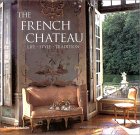
If you love French history, art, decoration and life style; if you have ever dreamed of living in a beautiful French chateau, you must get this book. Each time I open this book I am enchanted. What makes this book especially interesting is that people still live in these chateaus, these dreamscapes of tall Mansart roofs, formal French gardens and rooms filled with 18th century furniture. Forget about the text, it's the ravishingly photographed gardens and interiors that inspire one to dream. Beyond the sheer fantasy of it, this book showed me how I could create a little of the "French Chateau Style" in my own humble living space.
The Most Beautiful Country Towns of Provence
The outstanding beauty and distinction of the small towns of Provence have proved irresistibly attractive to visitors from America for the best part of a century. From the hills and mountains of the Alps and the Lubéron to the rich vine-growing country of the Var and the delightful coastal resorts, these communities are special places indeed.
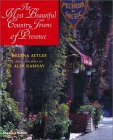 In the small towns one finds the true spirit of Provence. Terracotta roofs cling at strange angles to stone and plaster; deep, velvety shade covers the ground beneath tall plane trees in some peaceful square, enlivened by the sound of water from an ancient fountain. Sometimes calm, sometimes vibrant, but always timelessly appealing, the most beautiful country towns of Provence are presented here in Alex Ramsay's perceptive photographs and Helena Attlee's evocative commentaries.
In the small towns one finds the true spirit of Provence. Terracotta roofs cling at strange angles to stone and plaster; deep, velvety shade covers the ground beneath tall plane trees in some peaceful square, enlivened by the sound of water from an ancient fountain. Sometimes calm, sometimes vibrant, but always timelessly appealing, the most beautiful country towns of Provence are presented here in Alex Ramsay's perceptive photographs and Helena Attlee's evocative commentaries.
This magnificently illustrated survey opens in the west of the province, marked by the Roman presence and home to the lively regional centers of Arles and Uzès. In the center of Provence-the départements of Var and Vaucluse-are such attractions as L'Isle-sur-la-Sorgue, famous for its antique markets, and Hyères, one of the first resorts on the Riviera. Haute-Provence and Maritimes, which sweep around the north of the province and finally descend to the sea in the east, embrace the varied gems of mountainous Saint-Martin-Vésubie, coastal and Italianate Menton, and Grasse, perfume capital of the world. The variety revealed in this visual and textual feast is incredible-and all set in the dramatic contours of one of Europe's most striking landscapes.
Like other volumes in this internationally best-selling series, The Most Beautiful Country Towns of Provence is completed by lists of sights to visit and places to stay and to eat. 260 color photographs.
French Lessons:
Adventures with Knife, Fork, and Corkscrew
 Peter Mayle, author of the bestselling A Year in Provence has done it again--but differently. Traveling this time beyond his adopted Provence throughout France, the food and travel writer has produced French Lessons, a celebration of many of that country's gastronomic joys. Whether pursuing La Foire de Fromages, the annual cheese fair at Livarot; a Burgundian marathon offering runners Médoc refreshment; or a village truffle mass that concludes with a heady dégustation of the newly blessed tuber, Mayle takes his readers in hand and shows all. Wide-eyed yet knowing, ever affable but with a touch of mischief, he's an ideal companion, the best possible narrator of his lively food adventures.
Peter Mayle, author of the bestselling A Year in Provence has done it again--but differently. Traveling this time beyond his adopted Provence throughout France, the food and travel writer has produced French Lessons, a celebration of many of that country's gastronomic joys. Whether pursuing La Foire de Fromages, the annual cheese fair at Livarot; a Burgundian marathon offering runners Médoc refreshment; or a village truffle mass that concludes with a heady dégustation of the newly blessed tuber, Mayle takes his readers in hand and shows all. Wide-eyed yet knowing, ever affable but with a touch of mischief, he's an ideal companion, the best possible narrator of his lively food adventures.
The Secret Life of the Seine

Rosenblum not only shares the romance of life aboard a houseboat moored alongside a quay in Paris, but also candidly (and good-naturedly) reveals the truth about that life. His eccentric collection of river-dwelling neighbors provides plenty of material to enliven this entertaining tour, with everyday happenings capturing the essence of a most curious lifestyle. But living on a houseboat in Paris is only part of the journey. Rosenblum's fierce attachment extends to an exploration of the undulating waterways of France's renowned river. He is a knowledgeable raconteur who travels from the river's source to its final destination, delving into the history of the French people and reflecting on the current living conditions those whose lives are intimately tied to the river's barges.
Finest Houses of Paris
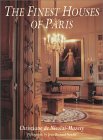
We are taken into a world of luxury and refinement beyond imagination: butlers setting a table for sixty in Baron Guy de Rothschild's palace, considered the grandest private house in France. Or a summer's day on the edge of Hubert de Givenchy's left-bank garden, where a table of six is set in eighteenth-century silver and porcelain. Visit the British Embassy, which still retains the décor and furniture of its erstwhile owner Paoline Borghese, sister of Napoleon. Tour the history-filled apartment of the Permanent Secretary to the French Academy. In some cases, the owners have refused to be identified, but that does not detract from the elegance of their interiors, the superb presentation of their food, or the fascinating descriptions of those who preceded them - including Madame de Stael, Proust's hero the Comtesse de Greffuhle, and a parade of now-departed bewigged grandees.
There have been other highly successful books on the great houses of Paris, but nothing this sumptuous or exclusive. This volume will seduce every Francophile, society watcher, and Paris lover, not to mention every decorator and party giver.
Eyewitness Travel Guide to Loire Valley

This is a great book for people who like lots of pictures and maps. It not only provides you with tips on travel (phonec calls,money ect) but it gives you insight into the different sections of the Loire. Each major attraction has one or more pages dedicated to it. The book really gives you a feel for what you will be seeing. It is one of the best guide books i have ever bought. I liked it so much i bought the one for Paris.
"I rode my bike in the Loire Valley. This book helped me in planning the route (along with Michelin Green Book). Wonderful, alluring pictures! Wonderful color code/guide system. Interesting information on the differences on the variety of castles/chateaux and churches & abbeys. Detailed yet concise history. Provides different themed tours for walking or driving. Nice pictursque maps of old towns with interests. It helped me decide which villages to stop for the night. I highly recommend this book! I also have Eyewitness Travel Guide of Paris, London, and Amsterdam. I plan to buy more books on Greece and Italy for my next trip!"
|



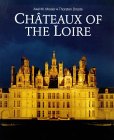
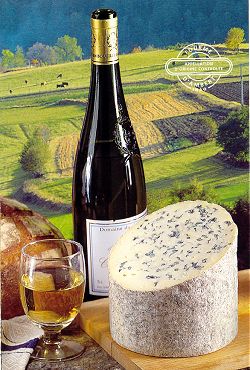
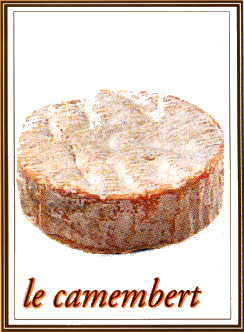
 View fascinating movies about France
View fascinating movies about France 





